We may receive a commission when you use our affiliate links. However, this does not impact our recommendations.
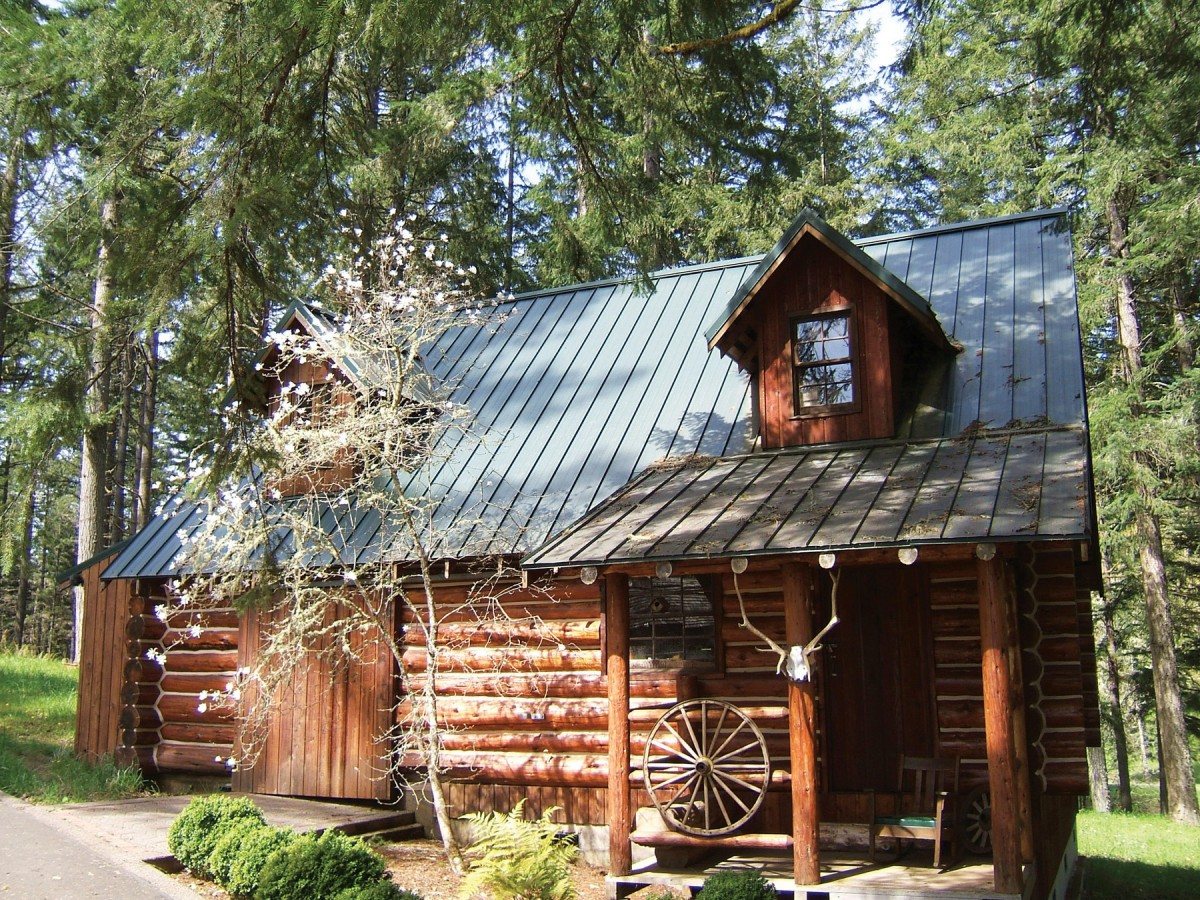
My shop may appear rustic, but you won’t find a dirt floor or antique machinery inside.
Editor’s note: This article originally appeared in American Woodworker #146.
In fact, my friends all make fun of me for having a shop that’s so nice, someone could actually live in it. One friend even asks if he has to take off his shoes before entering. While painstakingly detailing the shop wasn’t my intended goal, projects like this can take on lives of their own.
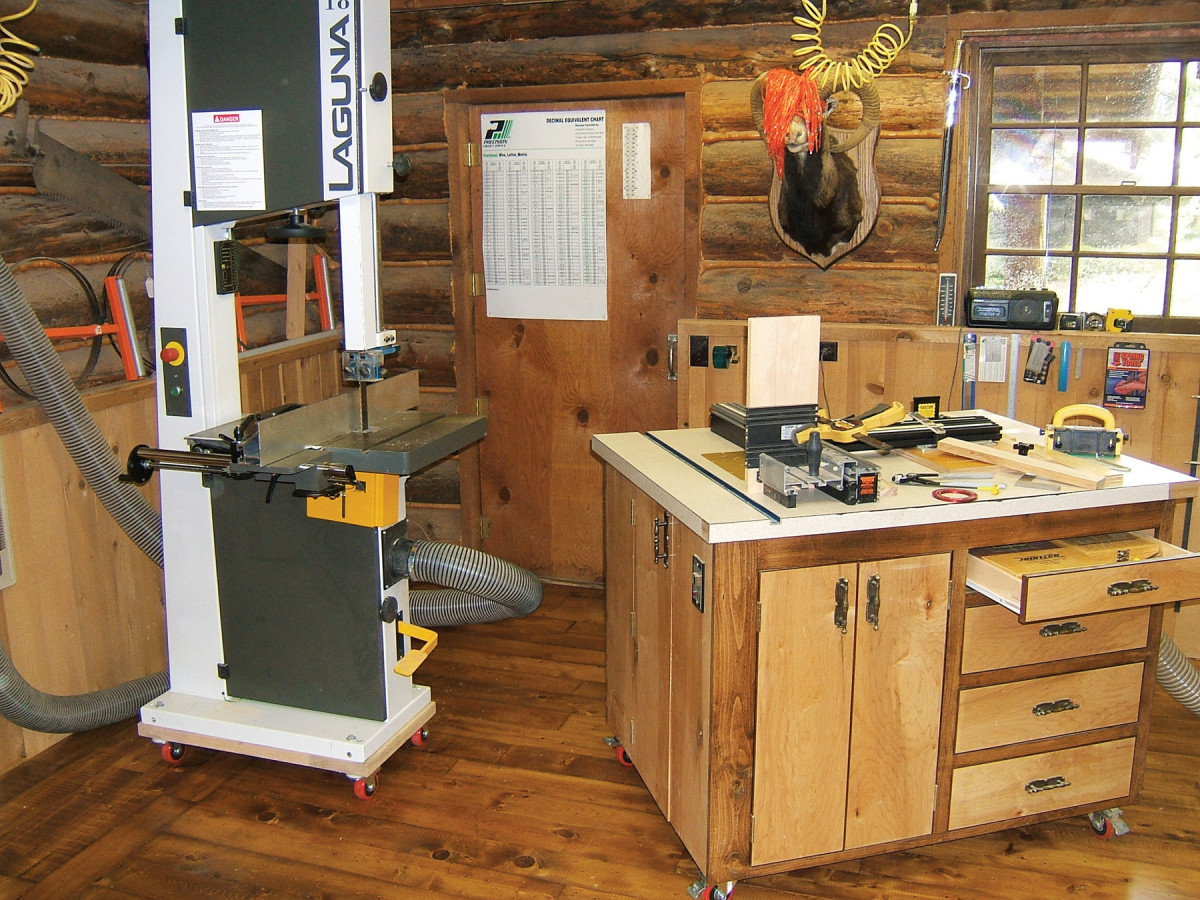 The structure consists of lodge pole pine logs that were salvaged after a pine beetle infestation that occurred in eastern Oregon about 25 years ago. I had the dead trees cut down and hauled by a team of horses to a portable mill. There, flat, parallel faces were sawn on each log, following its natural taper, to prepare it for use in log construction. After the logs had been milled, I hauled them back across the mountains (by truck this time) to my home in the Willamette Valley.
The structure consists of lodge pole pine logs that were salvaged after a pine beetle infestation that occurred in eastern Oregon about 25 years ago. I had the dead trees cut down and hauled by a team of horses to a portable mill. There, flat, parallel faces were sawn on each log, following its natural taper, to prepare it for use in log construction. After the logs had been milled, I hauled them back across the mountains (by truck this time) to my home in the Willamette Valley.
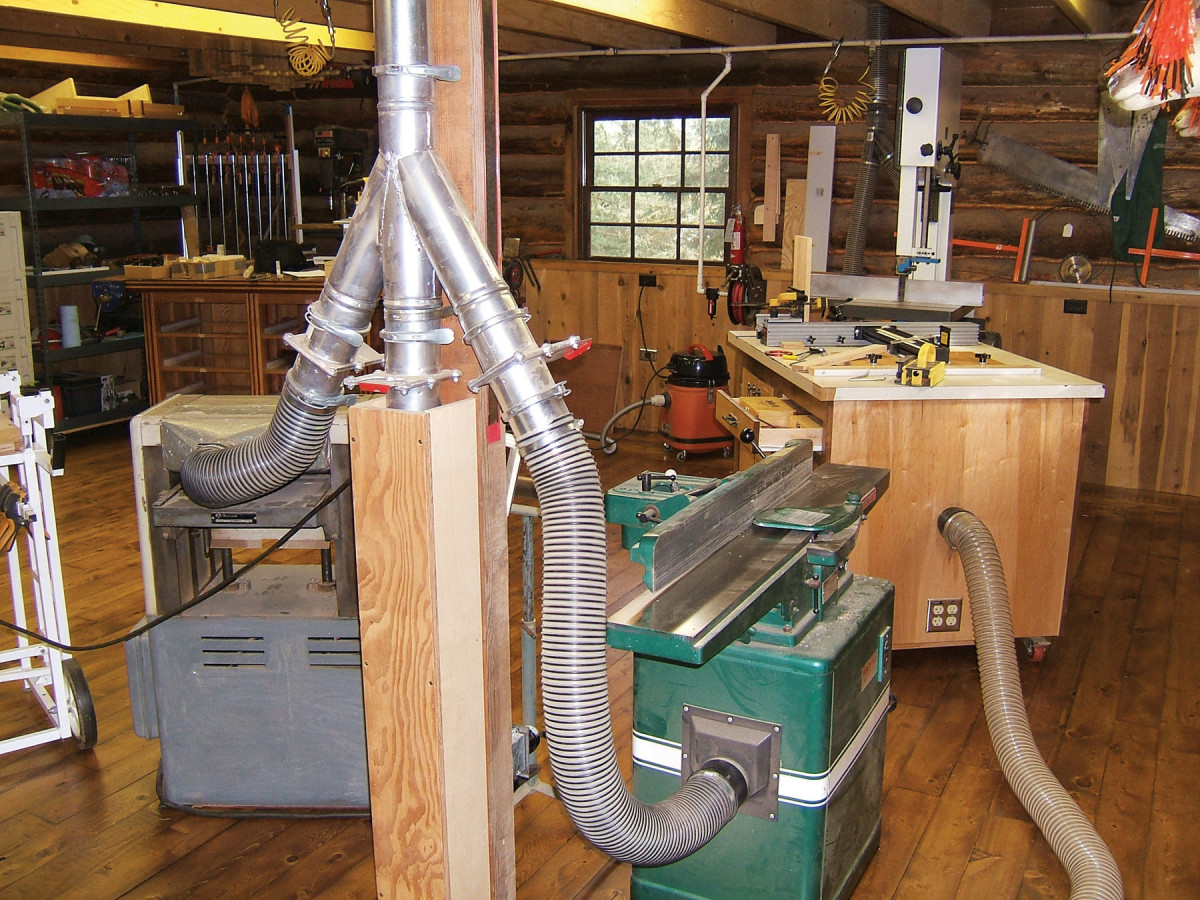 I hired a young guy with a boom truck and log construction know-how to erect the building (one of the smarter things I’ve ever done). I served as the grunt/gopher/log peeler and general flunky. After six weeks of backbreaking labor, my shop took shape. (Concurrently, my own shape cast a thinner shadow, as I lost ten pounds.) We cut out the window and door openings and notched the joists into the top course of logs, so we could install the metal roof, windows and doors. The tedious job of chinking between all the logs was the last step. Inside the shop, I installed Alaskan yellow cedar flooring. I distressed the boards by whacking them with hex head bolts and then carefully applied stain and finish to get the “old world” look I wanted.
I hired a young guy with a boom truck and log construction know-how to erect the building (one of the smarter things I’ve ever done). I served as the grunt/gopher/log peeler and general flunky. After six weeks of backbreaking labor, my shop took shape. (Concurrently, my own shape cast a thinner shadow, as I lost ten pounds.) We cut out the window and door openings and notched the joists into the top course of logs, so we could install the metal roof, windows and doors. The tedious job of chinking between all the logs was the last step. Inside the shop, I installed Alaskan yellow cedar flooring. I distressed the boards by whacking them with hex head bolts and then carefully applied stain and finish to get the “old world” look I wanted.
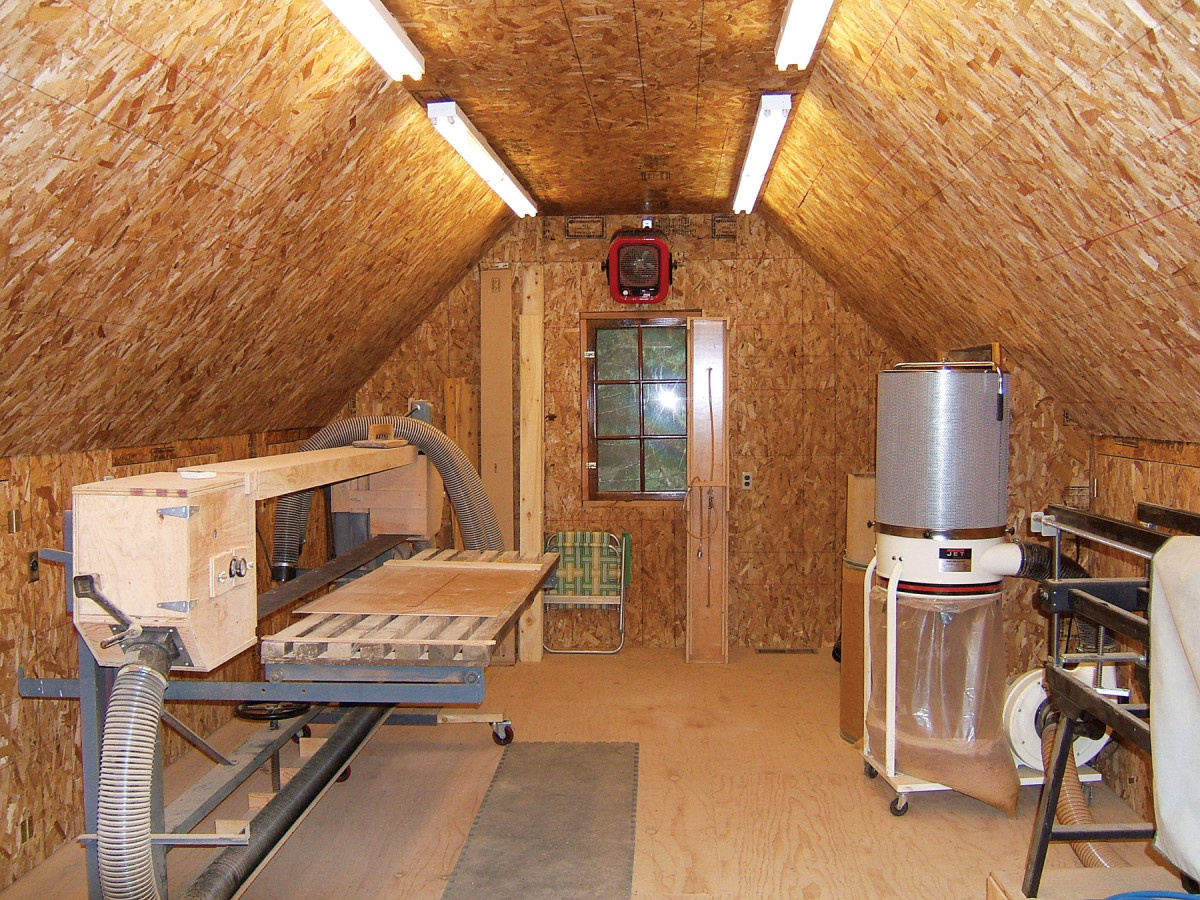 Although the log walls and distressed flooring create a rustic appearance, my shop is modern when it comes to tools. I like to build fine furniture, unique cabinetry, and anything that requires attention to detail and precision. So over the years, I’ve amassed a sizeable collection of new and “new to me” woodworking tools that help me achieve these results. For example, my shopmade routing station is equipped with a Woodpecker router lift mechanism, a super-accurate Jointech fence, and a Fein vacuum system. My Delta tablesaw sports an Incra Miter 3000, and I upgraded my bandsaw with Laguna’s Driftmaster fence. I also have a Leigh FMT jig and a whole suite of Festool power tools. I bought my planer as a used machine over 25 years ago, about the same time I purchased my jointer as new. When a neighbor bought a new Legacy machine, I acquired his old first-generation one and upgraded it with a 3-1/2 hp variable speed plunge router. The stroke sander was a throwaway tool for which I built the plywood housings to catch and disperse dust. My workbench and roll-around sheet goods rack are shopmade.
Although the log walls and distressed flooring create a rustic appearance, my shop is modern when it comes to tools. I like to build fine furniture, unique cabinetry, and anything that requires attention to detail and precision. So over the years, I’ve amassed a sizeable collection of new and “new to me” woodworking tools that help me achieve these results. For example, my shopmade routing station is equipped with a Woodpecker router lift mechanism, a super-accurate Jointech fence, and a Fein vacuum system. My Delta tablesaw sports an Incra Miter 3000, and I upgraded my bandsaw with Laguna’s Driftmaster fence. I also have a Leigh FMT jig and a whole suite of Festool power tools. I bought my planer as a used machine over 25 years ago, about the same time I purchased my jointer as new. When a neighbor bought a new Legacy machine, I acquired his old first-generation one and upgraded it with a 3-1/2 hp variable speed plunge router. The stroke sander was a throwaway tool for which I built the plywood housings to catch and disperse dust. My workbench and roll-around sheet goods rack are shopmade.
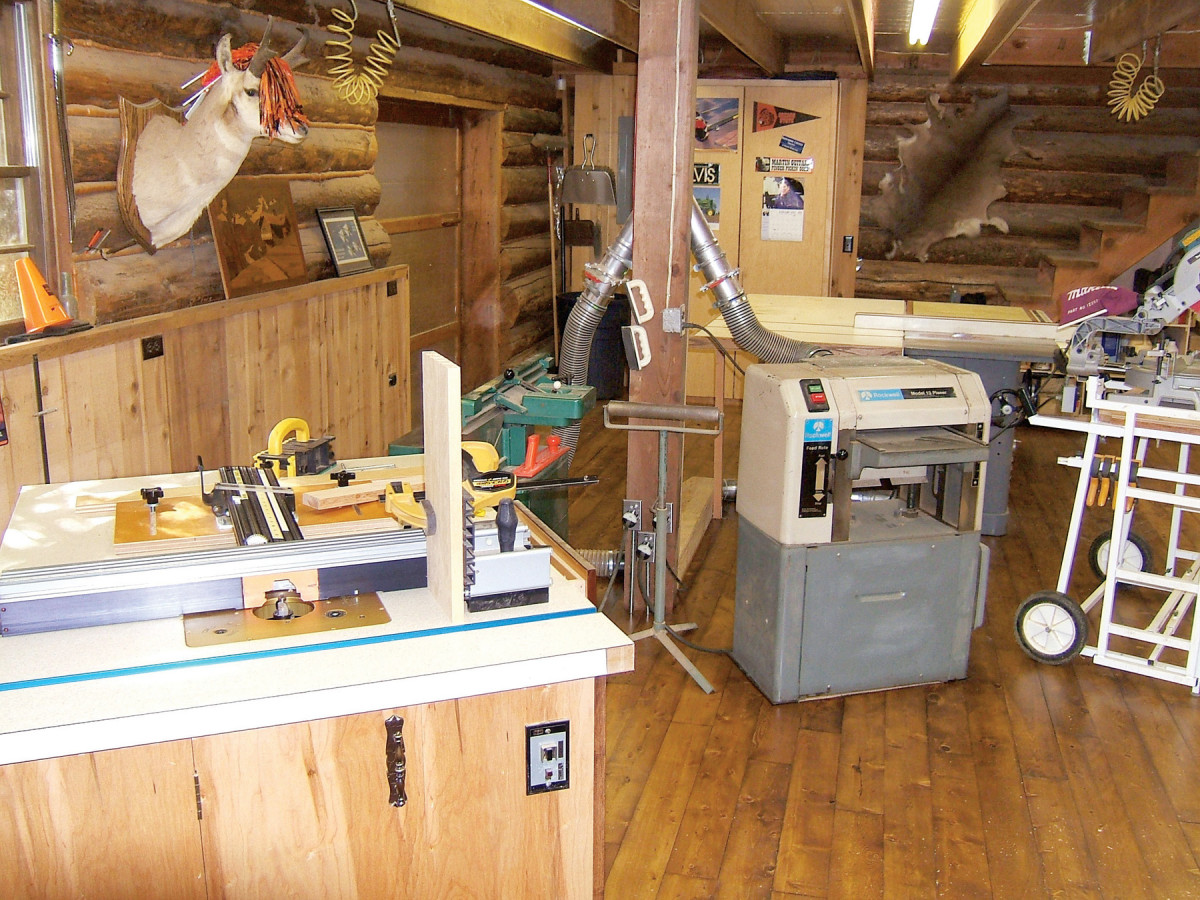 To make the 24’ x 32’ main floor of my shop as versatile as possible, almost everything is mobile. The stroke sander and Legacy machine reside upstairs, along with the dust collector, which is remote-controlled. Dust collection ducts run downstairs to service the tablesaw, bandsaw, jointer and planer. Overhead airlines are located throughout both levels. Both levels are also serviced by variable speed air filtration systems that I turn on whenever I am in the shop.
To make the 24’ x 32’ main floor of my shop as versatile as possible, almost everything is mobile. The stroke sander and Legacy machine reside upstairs, along with the dust collector, which is remote-controlled. Dust collection ducts run downstairs to service the tablesaw, bandsaw, jointer and planer. Overhead airlines are located throughout both levels. Both levels are also serviced by variable speed air filtration systems that I turn on whenever I am in the shop.
I really enjoy my shop, especially when a warm fire is burning (did I mention the woodburning stove?) and my next project is taking shape. But it’s safe to say that I will never, ever, build another shop. Once in a lifetime is enough for me! –John Tyler
Here are some supplies and tools we find essential in our everyday work around the shop. We may receive a commission from sales referred by our links; however, we have carefully selected these products for their usefulness and quality.








